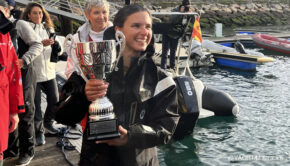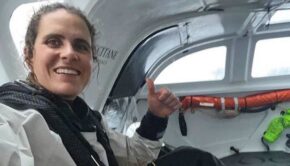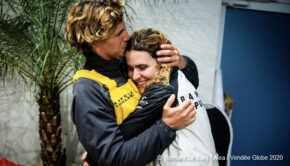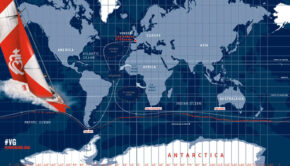Awakening the Senses – Sight
Published on October 6th, 2016
MySailing.com.au
About to be isolated as he circumnavigates around the world in the Vendée Globe race, Sébastien Josse knows that he is strong. The Mono60 Edmond de Rothschild skipper is aware that these latest generation monohulls are breaking new ground, offer no comfort and present a big challenge. In order to gain a better understanding of what these words entail, MySailing.com have asked Sébastien to describe the way in which his five senses will come into play in this extreme reality. Each week, until the start of the Vendée Globe on November 6, discover a new sense and immerse yourself a little deeper into the world that awaits Sébastien before he embarks on this new journey.
Seeing, but how?
At first sight, being able to see is essential. Only due to the flat and high volume of the hull, which is a real benefit in terms of speed, hundreds of liters of sea water sweep across the deck of Gitana 16, making it essential for the sailor to be protected. As such, Sébastien spends most of his time taking shelter under the cuddy, which covers the watch and maneuvering station, whilst his eyes struggle to vary the viewpoints.
“As soon as you are sailing 20 miles offshore, the boat is under water and you can no longer see in front of you,” he explains, “Even if you poke your head out, you can’t see anything. Leaving the cockpit means that you are very exposed, battling against the elements and inviting a great deal of inflow. That’s the name of the game but you only go up top when strictly necessarily, otherwise you live down below or under the cuddy.”
“At the start, for measurement and weight reasons, that section was very opaque, but we’ve added some Plexiglas openings. This means that I can see the sails, sky, clouds, sunsets, squalls, birds, horizon and other boats, etc. I can anticipate better and I can make the most of my surroundings,” he adds.
Seeing in the dark
“Life at sea involves routine and the all too important rituals. At night, you lose your sight and therefore a big reference,” he continues. “Before the sun sets, I go over that day’s trimming so that helps me through until the next day. We really like to have our way lit by the moon but if it’s pitch black, you light up your sails, you seek out fresh references and you refer back even more to the numbers on the screens. You also remain alert, like a cat, ready for anything. As such, it’s not necessarily the kind of night that you’re going to get any sleep, you relax more once day breaks. It’s down to me to adapt and the not the reverse,” assures Sébastien Josse.
Seeing Land
To circumnavigate the globe, you need to span the breadth of the world and the route that surrounds the Antarctic Peninsula. The sailors, in fact, sail around the capes of Good Hope and Leeuwin, several hundred miles below South Africa and Australia. As such, seeing land is very rare in the Vendée Globe, which isn’t a bad thing Sébastien admits. “The coasts are often a source of concern, due to the maritime shipping, the swell and the wind ruffled by the landscape or the risks of collision with blocks of wood, containers or cetaceans. Ultimately, Cape Horn is the only one you’re happy to see and it is a very special feeling!” Full Story.









 We’ll keep your information safe.
We’ll keep your information safe.